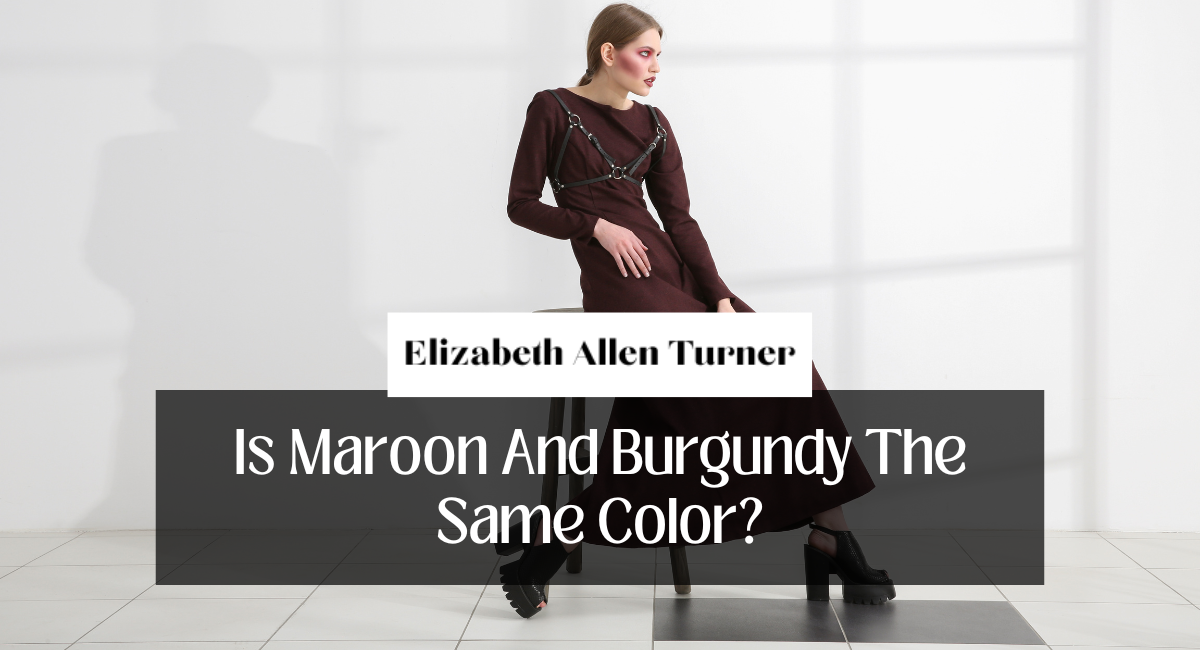The world of colors can be both interesting and perplexing, with minor differences that can make two colors appear virtually identical. Maroon and burgundy are a popular color combination that often ignites debate. So, is maroon and burgundy the same color, or do they have distinguishing characteristics?
In this post, we’ll delve into the fascinating world of maroon and burgundy, examining their similarities and distinctions and shed light on how these rich and appealing hues contribute to the world of fashion and design.
Is Maroon And Burgundy The Same Color?
No, maroon and burgundy are not the same color. Burgundy and maroon are similar but not identical hues. Both hues are members of the red color family and are deep, intense tones. The primary distinction between maroon and burgundy is their nuances and saturation.
Maroon: Compared to burgundy, maroon is a darker, reddish-brown hue with a warming undertone. It has a predominance of brown hues, lending it a slightly earthy and rustic appearance. The color maroon is frequently described as brownish-red or brownish-brown.
Burgundy: Burgundy is a deep, purplish-red hue with cooler nuances than maroon. It resembles the color of red wine and is frequently described as reddish-purple or dark red with a tinge of purple.
Due to their similarity, maroon, and burgundy are frequently used interchangeably in various contexts despite being distinct hues. The specific hue of a color can vary based on context, and individual perception may also play a role in how one differentiates between the two hues.
In conclusion, maroon and burgundy are closely related to red hues, but maroon has warmer brown undertones, while burgundy has colder purple undertones. Both hues are popular choices for apparel, interior design, and other creative applications, adding depth and richness to any setting.
What Are The Differences Between Maroon And Burgundy Colors?
While they share some similarities, they also boast distinct characteristics that set them apart. Here are the main differences between maroon and burgundy colors:
1. Origin and Etymology
The intriguing historical origins of both maroon and burgundy contribute to their captivating allure. The term “maroon” derives from the French word “marron,” which means chestnut, and the Spanish word “cimarrón,” which refers to wild animals or escaped slaves.
In contrast, “burgundy” comes from the French region of Burgundy, which is renowned for its wine production and association with nobility.
2. Color Characteristics
Maroon is a rich, reddish-brown hue that emanates elegance and warmth. It resides on the darker end of the red spectrum and is frequently associated with autumn and the natural world.
On the other hand, Burgundy tends more toward a purplish-red hue and embodies sophistication and luxury. The primary distinction between the two colors lies in their undertones, with maroon leaning more toward brown and burgundy adopting a violet hue.
3. Usage and Symbolism
Due to its adaptability and ability to elicit a sense of strength and stability, maroon is widely employed in numerous industries, from fashion to branding. It represents perseverance, passion, and fortitude.
In contrast, Burgundy has strong associations with wealth, power, and ambition, making it a popular choice for luxury brands and expensive products.
4. Fashion and Design
Both maroon and burgundy have made their way into the fashion and design realm. As a result of their earthiness and coziness, maroon is a popular choice for autumn and winter fashion.
On the other hand, burgundy dresses and accessories are typically regarded as timeless and sophisticated, lending a touch of opulence to any ensemble. Both colors can create a warm and inviting atmosphere when used moderately in interior design.
5. Popular Combinations
Both maroon and burgundy create startling and harmonious color combinations with a variety of hues—maroon pairs well with neutral tones such as beige and ivory for a traditional appearance. Conversely, Burgundy complements gold, navy, and forest green wonderfully, enhancing its regal appeal.
6. Perceptions and Misconceptions
As with any comparable colors, maroon, and burgundy are frequently mistaken for one another. Understanding their unique characteristics, however, can help avoid confusion and ensure their correct application in various contexts.
7. Unique Characteristics
While maroon and burgundy share a general color spectrum, each pigment contains distinct tones and variations. Exploring the subtle distinctions can lead to the discovery of exceptional and captivating color combinations.
Bottom Line
At first glance, maroon and burgundy may appear similar, but they exhibit distinguishing characteristics upon closer inspection. Burgundy tends to have a purple or crimson undertone, whereas maroon tends to have a deeper, reddish-brown hue.
Both hues elicit a sense of sophistication and elegance, making them popular options for various fashion and design applications. While maroon and burgundy may share some similarities, they are distinct and adaptable hues that can lend a touch of luxury and charm to any setting.
Read more: The Right Order Of Applying Skincare Products
Thank you for reading!
